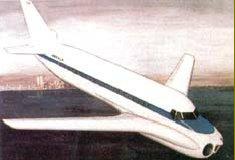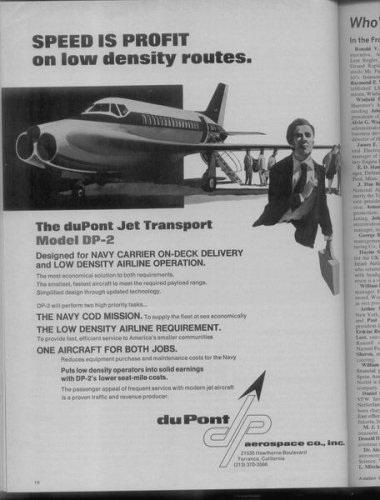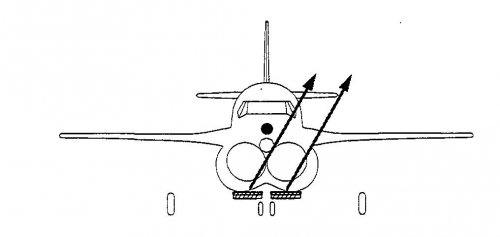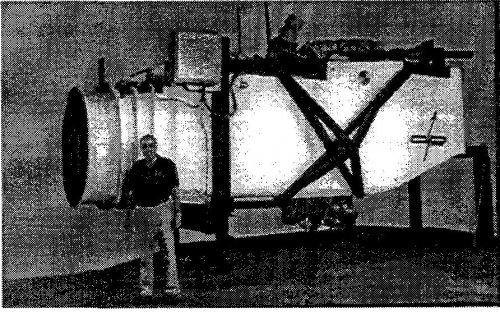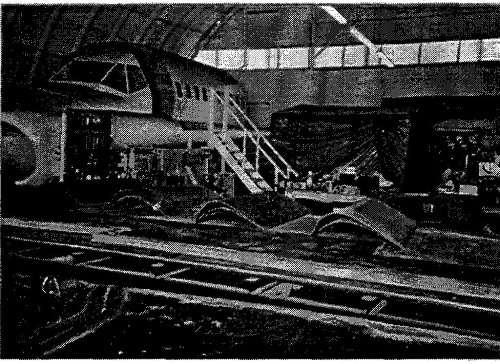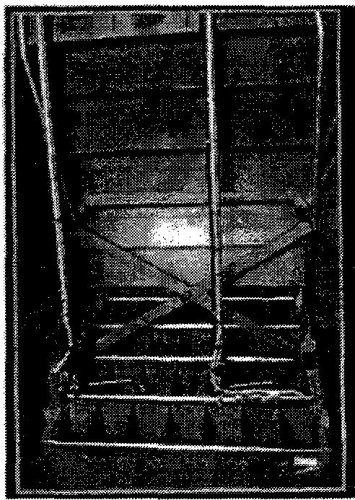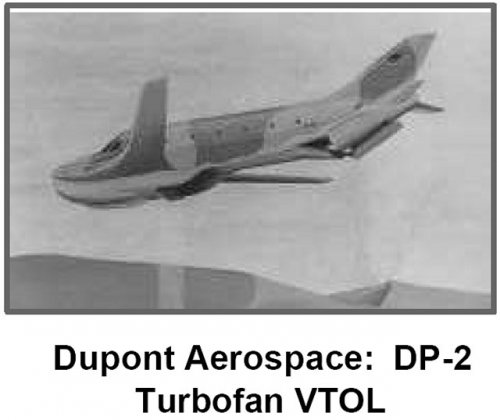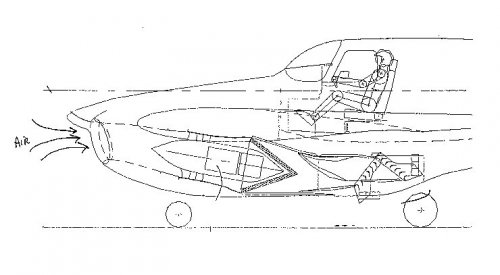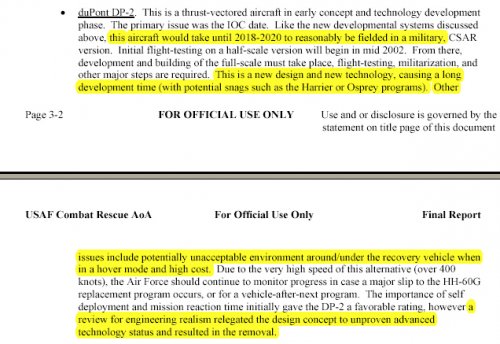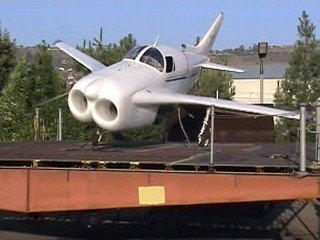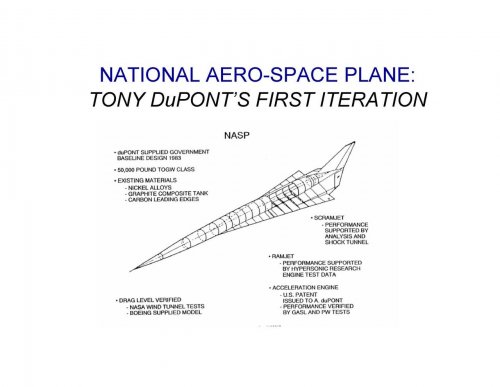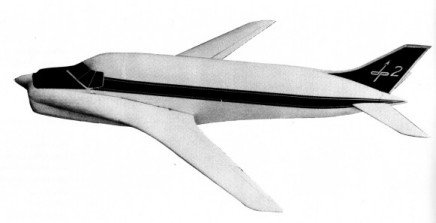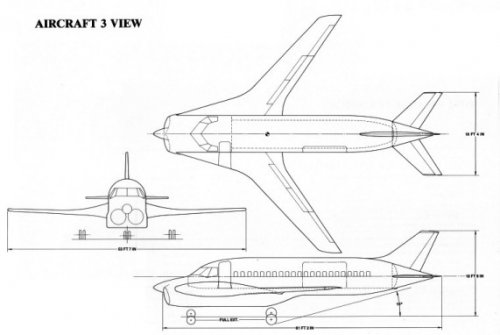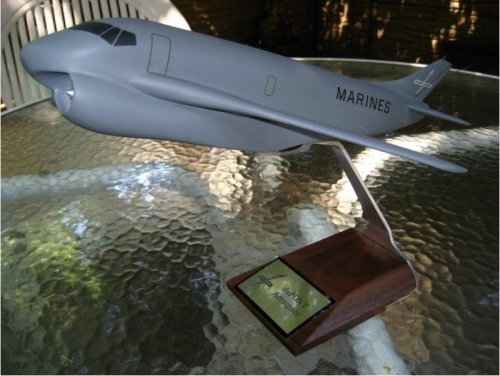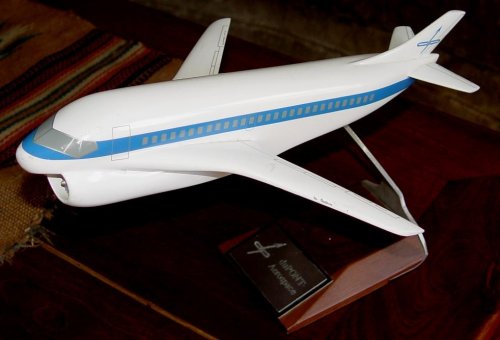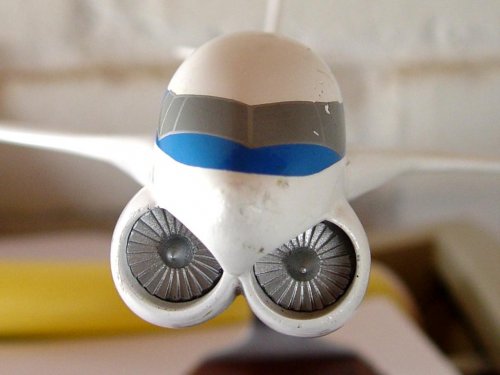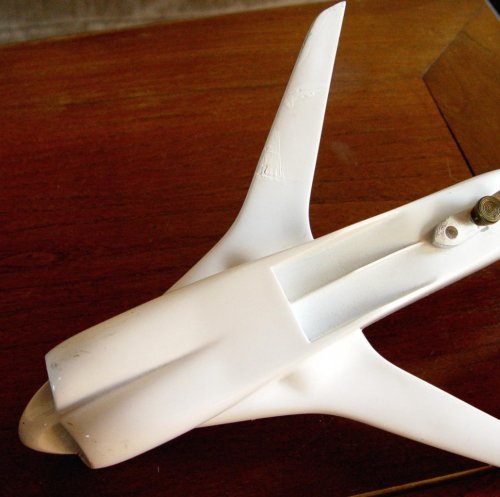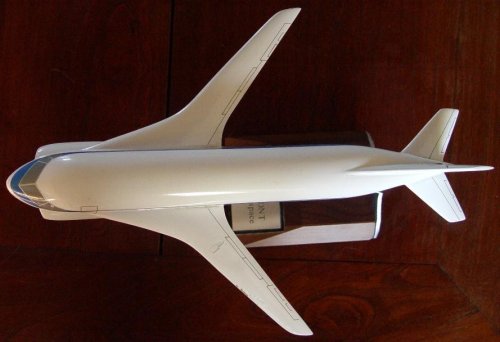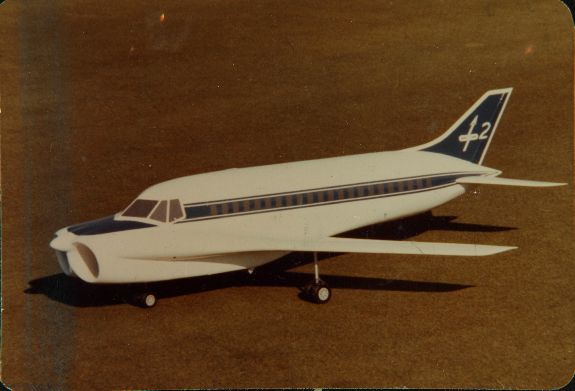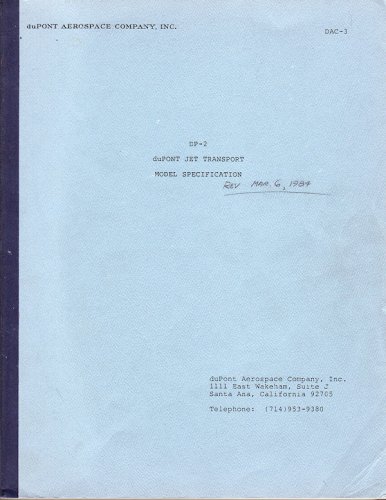This stuff from 1997
was called DuPont Linebacker.
Some more info from
AIAA paper 97-5549
Full Scale Test of a Transport Aircraft Thrust Vectoring System
by Anthony A. duPont
duPont Aerospace Co., Inc.
"A full scale test of such a thrust vectoring
system was successfully completed in the fall of
1996. A single engine installation using a 30,000
pound thrust V2500 engine was tested. The thrust
vectoring hardware was nearly 100% graphite epoxy
composite construction. It held the engine operating
line in both forward and vertical thrust. The data
showed high efficiency, low thrust losses, in both
forward and 90 degree vectored thrust. The ability to
vector the thrust for control was also demonstrated.
Composite structure held up well during several hours
of testing. The only structural problem was caused by
differential thermal expansion of the steel bearing
attachment fittings."
"The test hardware consisted of the thrust
vectoring hardware installed in a nozzle box and a
transition duct that connects the circular engine exit
to the rectangular nozzle box. The engine used for
the test was an International Aero engines V2500
rated at 30,000 pounds thrust. Figure 3 shows the test
hardware in the preparation building at Pratt and
Whitney's West Palm Beach facility.
The transition duct is on the left and the engine flow
is from left to right. The nozzle box houses the
cascade and control box, seen deployed below the
nozzle box at the center. The cascade pivot is the
shiny stainless steel circle at the top of the nozzle box
side. The black steel frames are attachment
provisions for the test stand and a substitute for
aircraft structure that limits the deflections of the
nozzle box sides where it is open at the bottom to
permit thrust vectoring. A steel box mounted forward
of the front steel frame houses the instrumentation
connections. The industrial actuators and electric
motors mounted on top of the nozzle box move the
cascade and controls for the test. They will be
replaced with aerospace actuators for flight.
The nozzle box and V2500 engine were
mounted on the Pratt and Whimey test stand for test.
The center line of the engine was about 16 feet above
the ground. A one diameter spool duct was inserted
between the engine and the transition duct in order to
permit total pressure measurements in a constant
diameter section. The total pressure of the flow
entering the nozzle box was measured by four static
pressure taps located 90 degrees apart on the duct
wall and boundary layer rakes to determine the
boundary layer blockage. The engine was connected
to the spool piece through a flexible seal to isolate
engine forces from nozzle box forces.
The nozzle box was suspended from three
50,000 pound capacity commercial load cells which
measured vertical forces. A series of links reacted
horizontal forces at the load cell connection points
insuring only vertical forces into the load cells. Fore
and aft forces were measured by the facility load cells
connected to the stong back that carried both the
nozzle box and engine mounting systems. Figure 4
shows the nozzle box being installed."
"The thrust vectoring system held the
engine operating line in both forward and vertical
thrust. An experimental mixer was provided by Pratt
and Whitney for the test. It worked pretty well for the
first try, but there was a region of unmixed turbine
exhaust in the center. A water injection system was
built to cool this region down to the mixed
temperature. The injection of water added mass,
which increased thrust, but it also cooled the flow,
which reduced thrust. The calculated net effect was a
small loss hi thrust. The amount of water injected
was so small relative to the air flow that this effect
was negligible."
"The thrust coefficient is measured thrust
divided by the thrust available from an isentropic
expansion from conditions entering the nozzle box.
Forward thrust lies on a single slightly upward
sloping line. The one point not on the trend was
taken when a steel fairing designed to preclude base
drag vibrated loose and was hanging down in the
flow. After the fairing blew off completely, the trend
resumed indicating that the worries about base drag
were unnecessary. For the most part the vertical
thrust measurements scatter around the predicted 95%
value within the predicted measurement accuracy.
The high value at idle can be explained by the idle
thrust being only slightly more than 1,000 pounds, so
a 50 pound measurement error would bring it up to
where it was measured. There is no explanation for
the high value at 4,200 RPM. The other points that
were considerably lower than the trend were taken
when the system had a large uncommanded roll, and
examination of the pressure data and roll angle taken
from an infra red video indicate the measurement to
be in error. These other indications show those points
should be near the 95% trend line.
The cause of the uncommanded roll could
not be determined in a timely manner during the
limited test period, so the roll control was
disconnected and testing continued with the roll vanes
fastened in the vertical position. A video camera
showed that the vanes moved, but the control actuator
did not. Post test analysis showed that the probable
cause was thermal distortion of the 1/4 inch thick
steel plate that supported the actuator arms used for
pitch control. The distortion probably moved the end
of the arm sideways which caused a roll control input
without moving the actuator. Calculations using the
angle on the video and the camera postion show that
the thrust vector was in the hard over position. The
inadvertant roll command showed the effectiveness of
the vane control before this was scheduled in the test
sequence."
"This was fortunate because, although the
composite structure held up well in the severe
vibration and temperature environment during testing,
thermal expansion of the bolt circle attaching the
stainless steel cascade bearing housing to the
composite cascade side pried off the doubler and
precipitated a structural failure. With the cascade no
longer restrained by the bearings, it pivoted backwards colliding violently with the aft end of the
nozzle box and falling to the concrete below the test
stand prematurely terminating testing. The lesson
learned the hard way is that metal connections in a
potential high temperature environment should be
made of invar to reduce thermal stress. Examination
of the bearing, which was discolored due to heating,
showed that it had experienced temperatures from
150 to 300 degrees higher than anticipated.
CONCLUSIONS
In spite of the structural failure the test was
declared a success. The thrust vectoring system
works, and the thrust coefficient in vertical thrust was
measured at the value expected after full
development. The thrust coefficient in forward thrust
is lower than desired operationally, and at least part
of the loss is attributed to the large housings for the
door actuation struts, which projected down into the
nozzle flow. Next tune, if they can not be eliminated,
they should at least be streamilined fairings.
Composite structure is satisfactory at the mixed
exhaust temperature of a high bypass fan, much
lighter than the equivalent metal structure and
eliminates problems with thermal expansion.
Eliminating thermal expansion is a big plus for
systems like this and helps maintain tight clearances
to control leakage and maintain the fan operating line."

